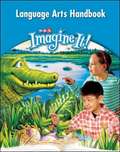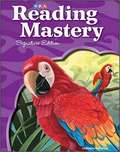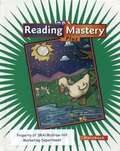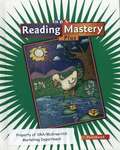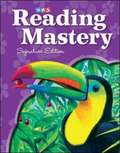- Table View
- List View
SRA Thinking Basics, Comprehension C, Workbook [Grade 6]
by Siegfried Engelmann Susan Hanner Phyllis HaddoxNIMAC-sourced textbook
SRA Word-Attack Basics, Decoding A, Workbook [Grade 3]
by Siegfried Engelmann Linda Carnine Gary JohnsonDecoding A. The skills are dividedinto four principal areas: Word-Attack Skills, WorkbookExercises, support activities and Checkouts and MasteryTests.
SRA Word-Attack Basics, Decoding A: Teacher Presentation Book 1
by Siegfried Engelmann Linda Carnine Gary JohnsonNIMAC-sourced textbook <P>Grade 3
SRA Word-Attack Basics, Decoding A: Teacher Presentation Book 2
by Siegfried Engelmann Linda Carnine Gary JohnsonNIMAC-sourced textbook <P>Grade 3
SRA: Imagine It! Language Arts Handbook, Level 3 [Grade 3]
by Jean Wallace Gillet Charles Temple James D. WilliamsNIMAC-sourced textbook
SRA: Imagine It!, Alphabet Sound Wall Cards, Level K [Kindergarten]
by Sra Mcgraw-HillNIMAC-sourced textbook
SRA: Imagine It!, Language Arts Big Book, Level K [Kindergarten]
by Sra Mcgraw-HillNIMAC-sourced textbook
SRA: Imagine It!, Language Arts Handbook, Level 2 [Grade 2]
by Sra Mcgraw-HillNIMAC-sourced textbook
SRA: Imagine It!, Language Arts Handbook, Level 4 [Grade 4]
by Sra Mcgraw-HillNIMAC-sourced textbook
SRA: Imagine It!, Language Arts Handbook, Level 5 [Grade 5]
by Jean Wallace Gillet Charles Temple James D. WilliamsNIMAC-sourced textbook
SRA: Imagine It!, Science Lap Book, Level K [Kindergarten]
by Joyce Brooks et alNIMAC-sourced textbook
SRA: Imagine It!, Social Studies Lap Book, Level K, [Kindergarten]
by Jan Mader et alNIMAC-sourced textbook
SRA: Imagine It!, Themes, Friendship, Animals and Their Habitats, Money, Level 3, Book 1 [Grade 3]
by Carl Bereiter Andy Biemiller Joe CampioneNIMAC-sourced textbook
SRA: Imagine It!, Themes, Heritage, Energy at Work, Making a New Nation, Our Corner of the Universe, Going West, Call of Duty, Level 5 [Grade 5]
by Carl Bereiter Andy Biemiller Joe CampioneNIMAC-sourced textbook
SRA: Imagine It!, Themes, I Think I Can Away We Grow!, Level 1, Book 1 [Grade 1]
by Carl Bereiter Andy Biemiller Joe CampioneNIMAC-sourced textbook
SRA: Imagine It!, Themes, Risks and Consequences, Nature's Delicate Balance, A Changing America, Science Fair, America on the Move, Dollars and Sense, Level 4 [Grade 4]
by Steve Graham Jan Hirshberg Marlene ScardamaliaNIMAC-sourced textbook
SRA: Imagine It!, Themes, Taking a Stand, Ancient Civilizations Ecology, Great Expectations, Earth in Action, Art and Impact, Level 6 [Grade 6]
by Carl Bereiter Andy Biemiller Joe CampioneNIMAC-sourced textbook
SRA: Language for Writing
by Jean Osborn Siefried EngelmannLanguage for Writing is a comprehensive writing program for students who need a highly structured approach to learn to write well. The program teaches the conventions students require to write clearly - the vocabulary needed to describe actions, events and objects, and the sentence structures necessary to put ideas into writing.
SRA: Reading Mastery Plus Storybook, Level 2
by Siegfried Engelmann Elaine C. BrunerReading Mastery Plus helps young learners become smarter, learn to read faster, and develop effective strategies for understanding.
SRA: Reading Mastery Plus Textbook, Level 2
by Siegfried Engelmann Owen EngelmannReading Mastery Plus is an integrated reading-language program. The program teaches phonemic awareness and sound-letter correspondence, word and passage reading, vocabulary development, comprehension, and building oral reading fluency.




